— The surroundings
The surroundings
San Gimignano
San Gimignano, the city of towers, in the Val d'Elsa, thanks to its medieval architecture has become a UNESCO World Heritage Site, and, to the delight of the palate, land of the production of the typical white wine (DOCG) Vernaccia.
Monteriggioni
Monteriggioni, in the Montagnola, mentioned by Dante Alighieri (Hell Canto XXXI verses 40-45), is a small fortified town surrounded by elliptical walls with 11 towers, that hosts the medieval festival (July) "Monteriggioni crowns itself with towers."
Colle di Val d'Elsa
Colle di Val d'Elsa, located on the "Francigena" route, with Etruscan archaeological sites, three museums, including one of the crystal, many historic buildings both civil and religious, churches of great historical and artistic value and the River Park Upper Elsa Valley.
Buonconvento
The town of Buonconvento, crossed by the "Via Francigena", with its walls recently restored, has joined the club "The Most Beautiful Villages of Italy".
Asciano
The town of Asciano located in the center of the "Crete Senesi", includes the Abbey of Monte Oliveto Maggiore founded by Bernardo Tolomei (14th cent.) with frescoes by Sodoma and Luca Signorelli. Inside the town the gothic church of San Bernardino accommodates the Etruscan museum.
Rapolano Terme
The town of Rapolano Terme, in addition to being surrounded by fortifications (Modanella, Poggio Santa Cecilia) and significant fractions as Armaiolo, hosts two major spas where you can relax and tone the body (Terme di San Giovanni and Spa Complex Antica Querciolaia).
Montalcino
Montalcino, whose territory produces the famous red wine (DOCG) Brunello boasts the beautiful Abbey of St. Antimo at Castelnuovo dell'Abate.
San Quirico
In San Quirico, stage of the "Via Francigena", you will find the Collegiate Church with exceptional inlays in the choir by Antonio Barili (1453-1516) and Horti Leonini made at the end of 1500, classical Italian garden.
Montepulciano
Montepulciano has Etruscan origins, is surrounded by three rows of walls (sec. XIV), is rich in monuments and churches, in August hosts the challenge "Il Bravio delle Botti". Its agricultural land is specialized in the production of red wine (DOC) Nobile di Montepulciano.
Pienza
Pienza, in the Val d'Orcia, is the birthplace of Pope Pius II (Enea Silvio Piccolomini), who in 1400 commissioned the architect Bernardo Rossellino to build the town above the old village (Renaissance architecture). The town is since 1996 the natural, artistic and cultural heritage of the UNESCO. In its territory, is produced the typical cheese (DOP) Pecorino di Pienza.

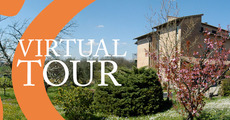
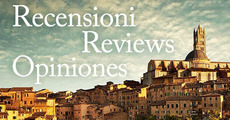

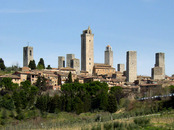
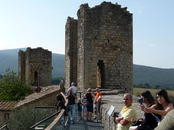
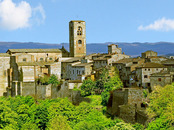
Via Pontignanello, 4 Località Pontignano, 53019 Castelnuovo Berardenga SIENA
MOB + 39 3333257979 , TEL/FAX + 39 0577357800
Email. [email protected]
P.IVA CIN: IT052006C2G2DXWRMW